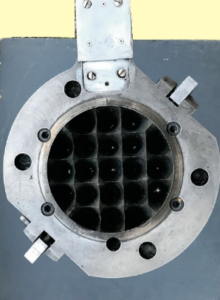Extrusion process for high consistency silicone rubber: A brief overview
by Fabian Verheyen, Nordmann, Rassmann GmbH
Silicone rubber belongs to the group of synthetic rubbers and, due to its unique property profile, offers a wide range of applications in a variety of industrial sectors.
According to a study by Ceresana eK, a market research company for the chemical and plastics sectors, sales of silicone rubber have grown by approximately 4.2% annually since 2008. In 2016, sales of approximately $15.5 billion were achieved. Ceresana forecasts annual growth of approximately 4.0% through 2024. The worldwide consumption of synthetic rubber has risen continuously, from 9,600 kt in 1990 to approximately 14,500 kt in 2015, illustrating the growth trend
for this material group.
Silicone rubbers are usually processed by injection molding, compression molding or extrusion. Extrusion accounts for the largest share of the total. In the construction industry, silicone rubber is used as a sealant or adhesive. In the electronics industry, its high thermal and chemical resistance is used in many components. In the medical technology, automotive and food industries, silicone rubbers are often used as media carrying components in the form of hoses or profiles. All applications have in common that high demands are placed on the material, as well as on the geometric dimensions, and thus on the manufacturing process.

